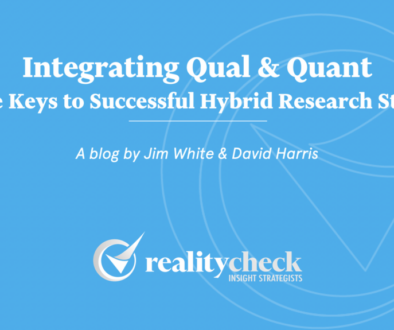Dump the Market Research Data Dump: The Craft of Insights Journalism®
There’s a lot of bad reporting in market research. This has serious implications for corporate research buyers. The best designed and executed market research studies will have little impact if the reports don’t communicate new insights clearly and simply.
For corporate research buyers, bad reports mean:
- Wasted time: Corporate research buyers waste time rewriting supplier reports or engaging in rounds of back-and-forth with the supplier before they can share with internal teams.
- Reduced actionability: If new insights aren’t reported with simplicity and clarity, teams won’t act. The report ends up having little impact because new insights are buried in a sea of slides, data tables and “old news.”
- Lost confidence: Bad reporting can erode the relationship between the consumer insights lead and internal teams. When bad reports are circulated, it not only reflects poorly on the research supplier, but also on the client insights manager or director who owns the project.
RealityCheck solves the problem of bad market research reporting by working like journalists. We were founded by a couple of journalists almost 25 years ago so reporting new insights in clear, compelling stories is in our DNA.
Insights Journalism®: An answer to the bad market research reporting plague
We understand the power of clear reporting. We’ve developed a workflow that addresses many of the root causes of bad reporting in market research. We call it Insights Journalism®.
Insights Journalism is rooted in how journalists work. Good journalists are masters of non-fiction storytelling. They do a few key things that we’ve adopted at RealityCheck.
We lead with the news
We lead with the most important new insights we’ve found. Good journalists don’t “bury the lead,” and neither do we. We organize our stories around the “new news” that matters most to our clients. Many market research reports are organized around what was done rather than what was learned, reporting in the order of the questionnaire or fieldwork. That’s not a story. That’s a data dump. Like journalists, we organize our reports around the most important new insights we’ve uncovered.
We write the story
Writing is essential to our process. We begin by writing the Strategic Story, a long-form, written article of insights, conclusions and recommendations. The Strategic Story is like a news story. It’s the engine of our narrative process. We do it regardless of whether the final deliverable will be a PowerPoint deck, a documentary-style video, an insights magazine, infographic or a combination of these things.
Writing the Strategic Story allows us to find the story in the data.
We keep it tight
Journalists like to say “write right, write tight.” That means getting your facts right and reporting them in as few words as possible. Market researchers often overwrite. They fill reports with big words, formal language, passive voice sentences and clutter. Some think this makes their reports sound authoritative and important. But this makes the story less clear.
At RealityCheck, we train our people to write like journalists, so our reports are concise and clear, ensuring newsworthy insights don’t get lost in a sea of slides.
Applying these simple rules of journalistic practice to market research reporting makes a huge difference. It’s why our clients often come to us to turn complex market research questions into clear answers.
If you’re tired of data dumps that lack insight or direction, let’s talk. Not all clients are a good fit for how we solve these issues. But if you share these frustrations, we’d be happy to learn more to see if we can help.
























